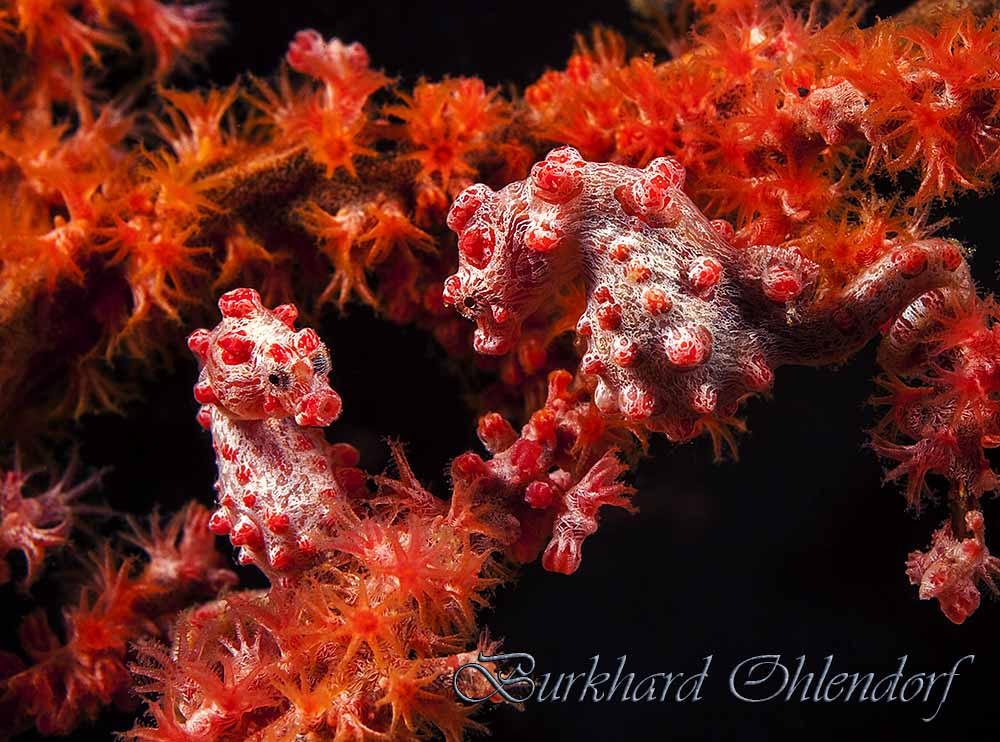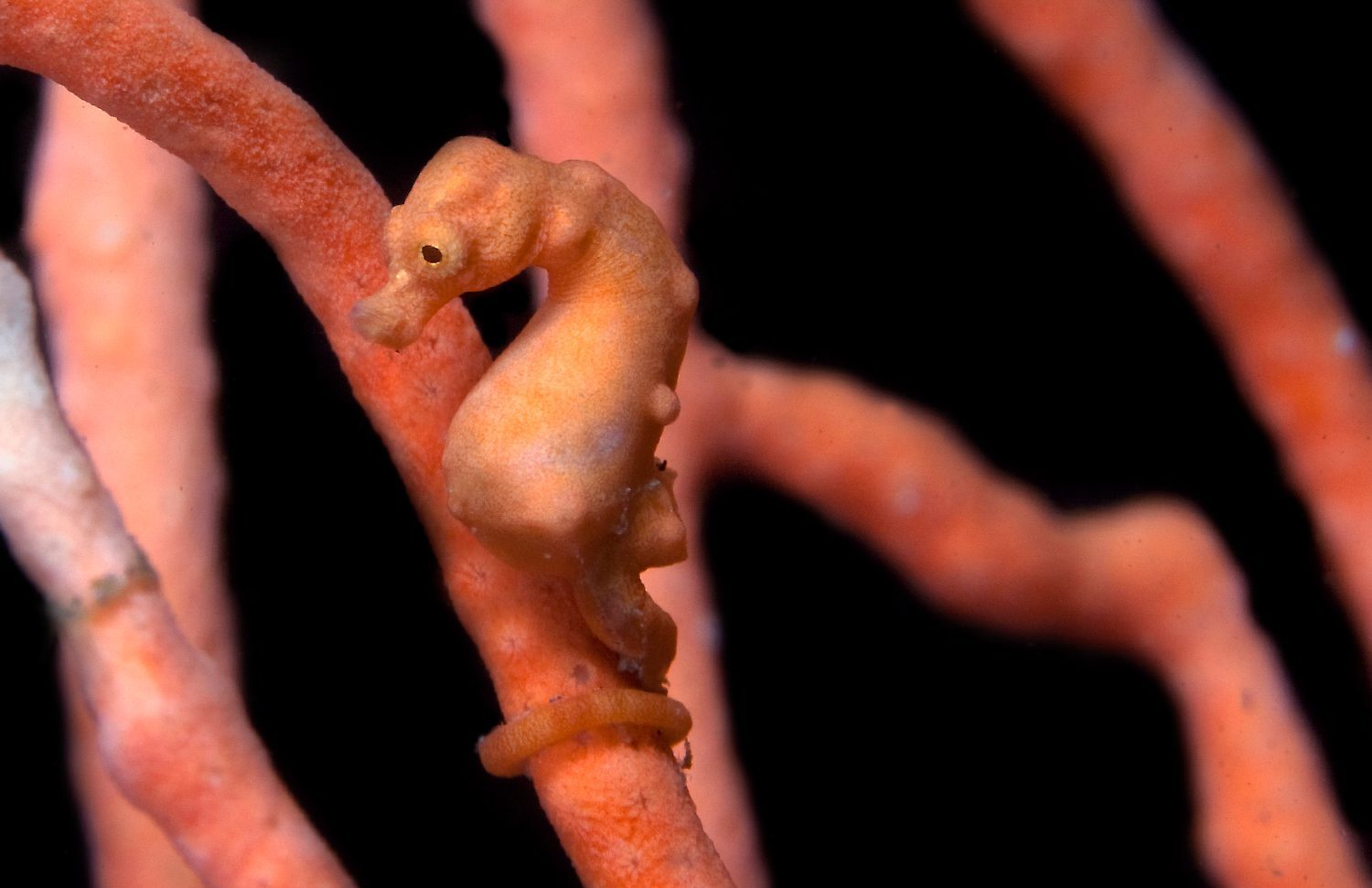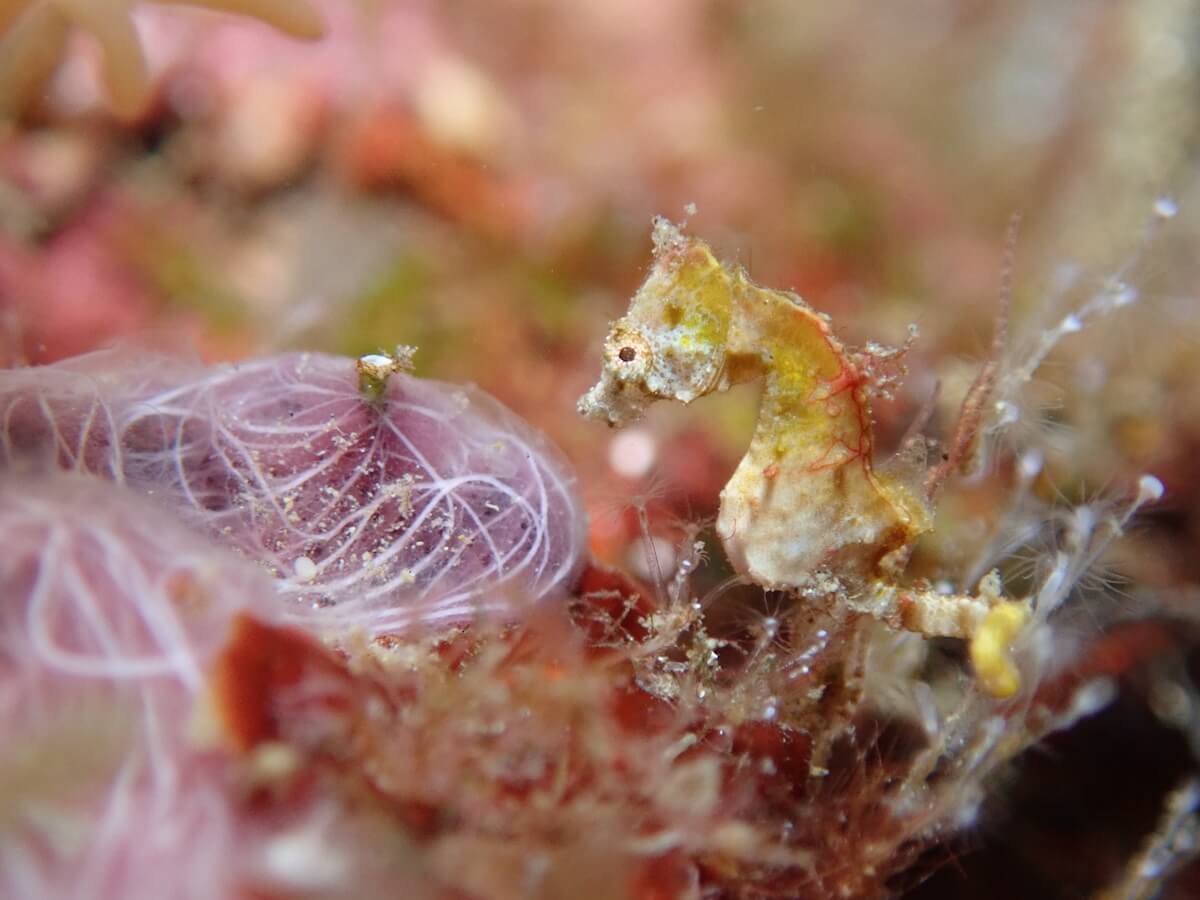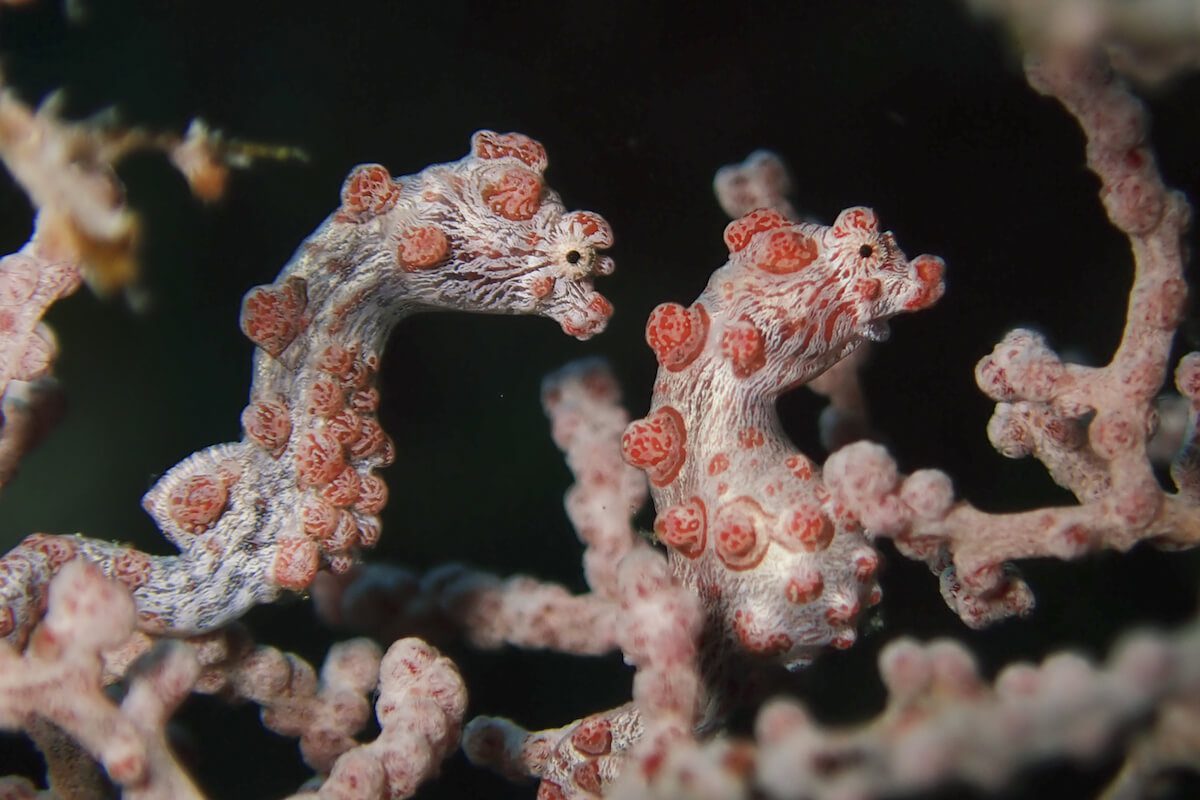Pygmy Seahorses in the Lembeh Strait

The Hippocampus bargibanti was the first species of pygmy seahorse discovered in as late as 2000. There are now known to be several species of pygmy seahorses which rarely grow to more than 2cm in length including the tail.
Pygmy seahorses are not found worldwide and the majority of them inhabit the area of Asia known as the coral triangle (which encompasses parts of Indonesia, Malaysia and the Phillipines). They are part of the Sygnathidae family (which includes seahorses, pipefishes and weedy and leafy sea dragons). Distinctive features include having tubular mouths into which they suck their food, very short snouts and the males carry their young inside their trunk as opposed to in a pouch on the tail like other seahorse species.
Pygmy Seahorses in Lembeh
Here in Lembeh, we are extremely fortunate to have three unique species of seahorse, the Baribanti pygmy seahorse, the Ponthi pygmy seahore and the Denise’s pygmy seahorse. In fact, the Denise’s pygmy seahorse was first discovered right here in the Lembeh Strait.
Below we take a look at these three species that you may spot when diving with us!

Baribanti Pygmy Seahorse (Hippocampus bargibanti)
The majority of pygmy seahorses, including the Bargibanti, are found on sea fans although some species are also found on algae and soft corals. Out of the three main species of pygmy seahorse found in Indonesia, the Bargibanti is by far the most widespread. It is not known if this is because there are more of them, or just that because they are larger, they are easier to spot than the other smaller species.
Bargibanti’s (Hippocampus bargibanti) live on Muricella gorgonian fans (between 16 and 40 meters). They are able to match their skin color and appearance to that of the fan almost exactly which, when combined with their tiny proportions, makes them very difficult to spot.
Their camouflage ability is no coincidence—they appear to live in symbiosis with the fan which leads to them reacting and developing ‘tubercles’ which mimic the bulbous textures of the fan corals. The most common color variations are pink, yellow, and light purple. The maximum length of a Bargibanti is 2.7 cm (including the tail) which makes them the largest of all the pygmy seahorse species.

Denise’s pygmy seahorse (Hippocampus denise)
Denise’s pygmy seahorse is smaller than the Bargibanti and measures only up to 2.4 cm in length. It also tends to be less fleshy with a more slender body.
Denise’s pygmy seahorses are found on numerous different species of fans – rather than just being limited to one particular host. The Denise’s species have considerably fewer tubercles which gives their skin a much smoother appearance. They also have a number of color variations including red, yellow, brownish and orange. Denise’s have been sighted at depths of up to 90 meters.

Pontoh’s pygmy seahorses (Hippocampus pontohi)
Pontohi’s pygmy seahorses do not live on gorgonian fans but instead, they are found on algae such as halimeda algae and various sea grasses. Unlike other species, they do not stick to one host and are seen moving from place to place in depths of 3 meters up to 25 meters. The Pontohi lacks tubercles and ranges in color from white with pink to yellow patches. There is also a darker variation which can be brown to reddish brown hue with red highlights (this was formerly classified as a separate species: Hippocampus serverni)
One of the most distinctive features of the Pontohi pygmy seahorse is the fine red filaments that look like hair. These grown along the dorsal spine of the seahorse creating a mane-like appearance.

Underwater Photography and Pygmy Seahorses
If you are an underwater photographer and would like to take pygmy seahorse images during your stay, we highly recommend a macro lens and strobe as a minimum.
We request that guests try to limit the amount of shots they take of any one individual as there is scientific evidence to support that repeated flashes can have a negative effect on these beautiful critters.
While pygmy seahorses are seen across the archipelago, Lembeh is one of the best places to see all of these species, and our guides are excellent spotters. All Lembeh Resort Dive Guides are trained in marine biology which gives them great insight into where to look for the best possible opportunity of a sighting.
If you are coming to join us at Lembeh Resort and are hoping to see these incredible critters make sure you are ready for some incredible diving.
Get in touch to book your next stay! Contact us on: reservations@LembehResort.com
Take the Quiz!

Want to challenge yourself? Try our pygmy quiz here and test your advanced knowledge of pygmy seahorses:
1.Which species of pygmy seahorse has red “filaments” (hairs) on its back?
a.Bargibanti
b.Pontoh’s
c.Denise’s
2.Bargibanti pygmy seahorses are usually found at between:
a.5- 15 meters
b.15 – 40 meters
c.25 – 50 meters
3.Denise’s pygmy seahorse species was named after Denise Nielsen Tackett who discovered the species in the Lembeh Strait.
a.True
b.False
4.How many eggs do female pygmy seahorses deposit into the males pouch for fertilisation in one go?
a.1 – 50 eggs
b.50 – 500 eggs
c.500 – 5,000 eggs
5.Which species of pygmy seahorse is “free-living” rather than being attached to a fan or soft coral?
a.Bargibanti
b.Denise’s
c.Pontoh’s
Further Reading
If you enjoyed reading this marine life Blog, you may also be interested in:



